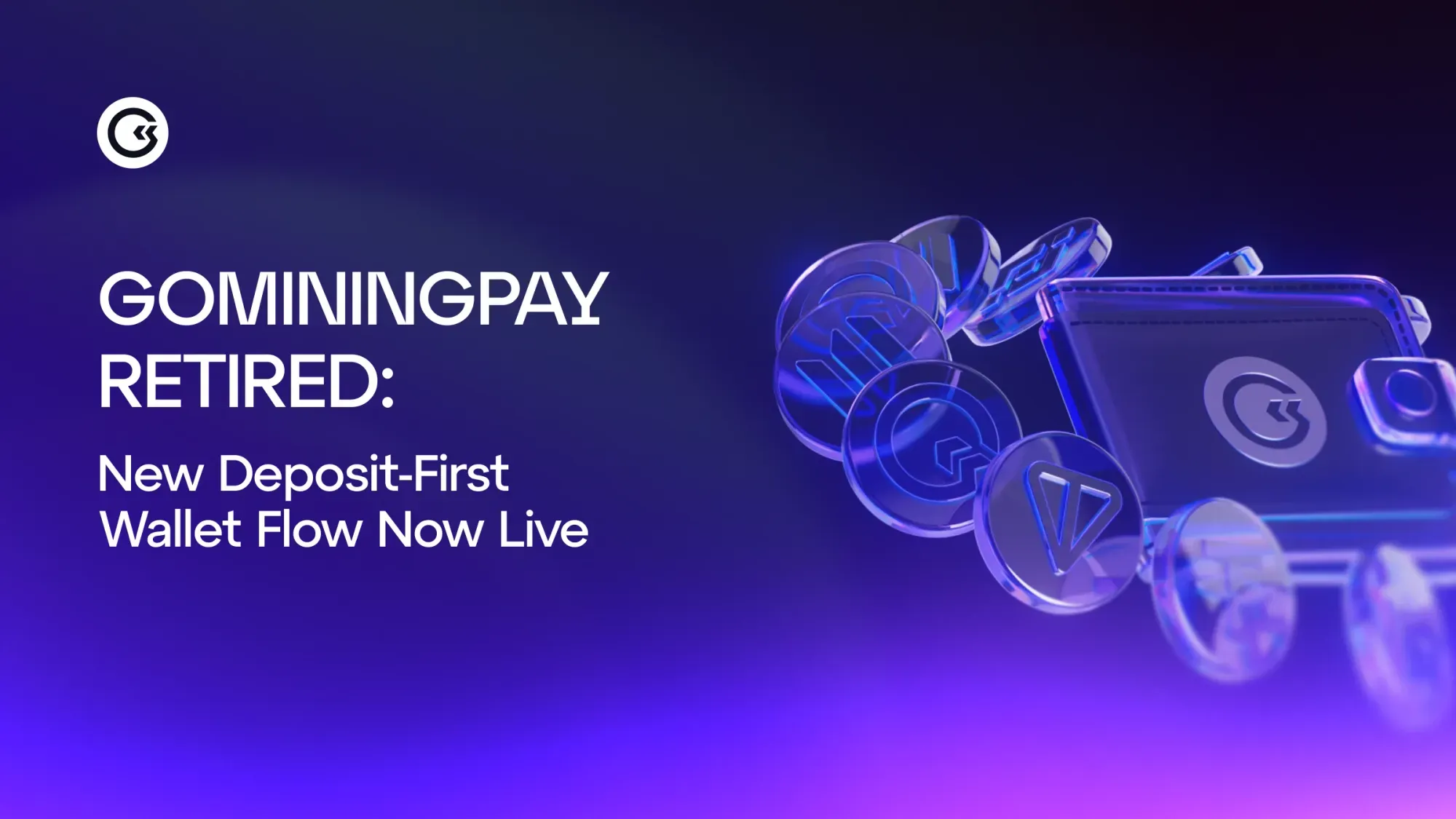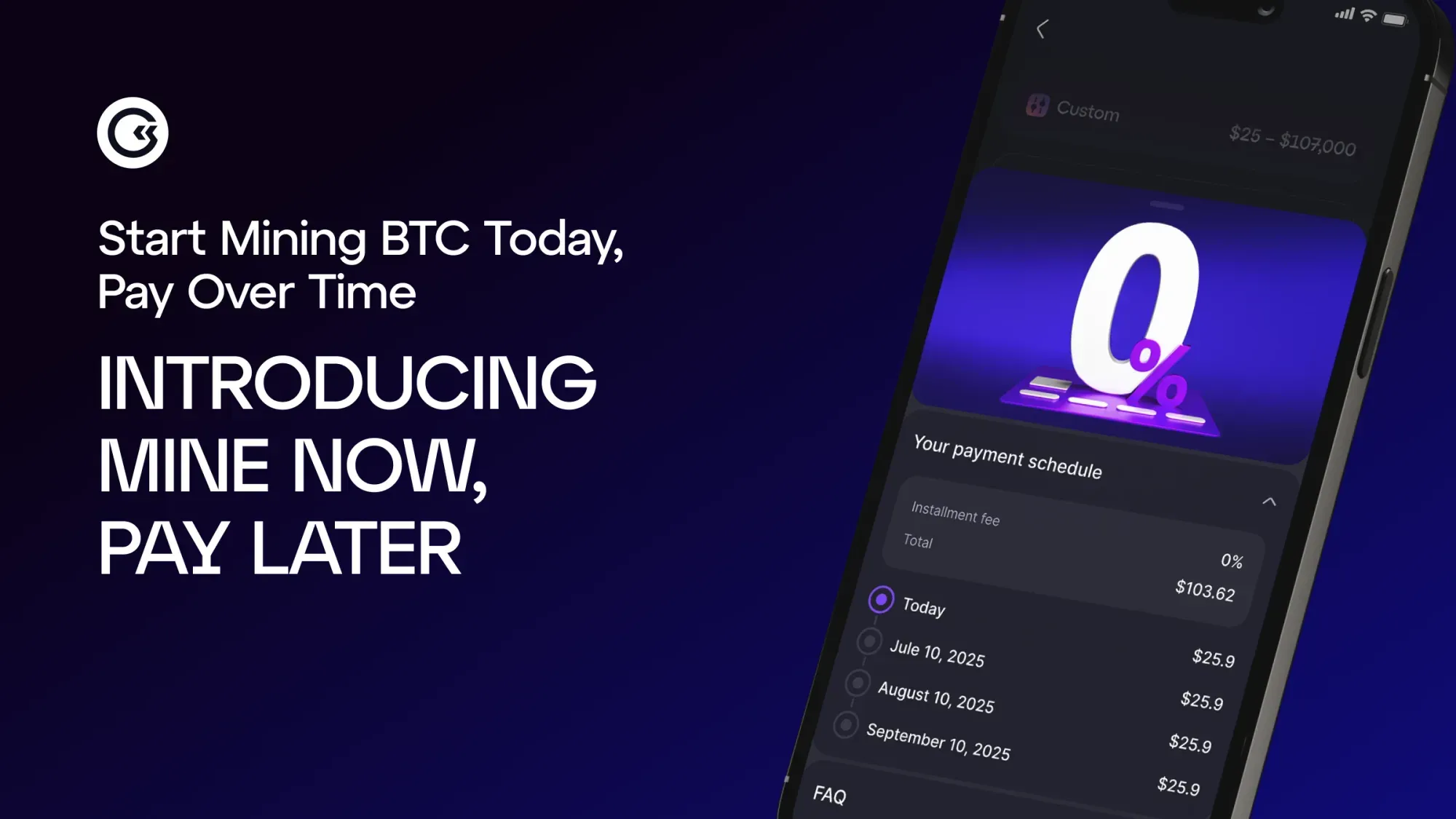مع تزايد شعبية العملات الرقمية، يدخل عدد متزايد من الأفراد عالم البيتكوين، فيقومون بشرائه وتداوله والاحتفاظ به على المدى الطويل. ولكن قبل أن تقفز مباشرة إلى أول صفقة عملات رقمية لك، هناك شيء في غاية الأهمية يجب أن تفهمه: كيف تحافظ على أمان أموالك الرقمية.
هنا يأتي دور محافظ البيتكوين.
هل تفكر في الاحتفاظ بالبيتكوين كخطة طويلة الأجل؟ ربما قررت أنك جاهز للمستقبل وتبحث عن طريقة للإنفاق به بانتظام؟ نوع "الخزانة الرقمية" التي ستختارها في النهاية سيكون له تأثير كبير على تجربتك. وفي كلتا الحالتين، ستصادف بالتأكيد مصطلحات مثل محافظ بيتكوين الباردة ومحافظ بيتكوين الساخنة. لا تنخدع، فهذه ليست مجرد كلمات طنانة من عالم Web3. تحدد هاتان الفئتان كيفية تخزين عملاتك الرقمية، ومدى سهولة وصولك إليها، ومدى حمايتها من التهديدات.
يهدف هذا الدليل إلى شرح كل ما تحتاج إلى معرفته حول أنواع محافظ البيتكوين، بما في ذلك المحافظ المادية (Hardware Wallets) والمحافظ البرمجية (Software Wallets) والمزيد. سنتناول أساسيات المحافظ المادية، والمحافظ البرمجية، وغيرها من الطرق الشائعة. ستحصل على صورة واضحة عن كيفية عمل كل نوع، وما هي إيجابياته وسلبياته، وكيف تختار الأنسب لاحتياجاتك. هل تريد أن تعرف كيف تنشئ محفظة باردة من الصفر؟ هل تحتاج إلى نصائح حول كيفية استخدام محفظة ساخنة للبيتكوين؟ أنت في المكان الصحيح.
ما هي محفظة بيتكوين الساخنة؟

محفظة البيتكوين الساخنة (Hot BTC Wallet)، أو "المحفظة النشطة"، هي نوع من المحافظ الرقمية المتصلة بالإنترنت. هذا الاتصال يجعل من السهل للغاية على المستخدمين الوصول إلى أموالهم بسرعة. تم تصميم هذه الخزائن الرقمية للسماح للمستخدمين بإرسال واستلام وتخزين البيتكوين في الوقت الفعلي، مما يجعلها مفيدة بشكل خاص للمعاملات اليومية أو الاستخدام المنتظم للعملات الرقمية.
ما هي محفظة البيتكوين الساخنة؟
يُشار إليها أحيانًا باسم "التخزين الساخن"، وهذا النوع من المحافظ الرقمية يبقى متصلاً بالإنترنت. بطبيعة الحال، وجود اتصال دائم بالإنترنت يجعل من السهل الوصول إلى البيتكوين الخاص بك متى احتجت إليه. يمكنك إرساله واستلامه وتخزينه على الفور تقريبًا. أليس هذا جيدًا؟ هذه الملاءمة هي التي تجعل هذا النوع من التخزين خيارًا شائعًا لأولئك الذين يجرون معاملات متكررة أو يستخدمون العملات الرقمية بشكل منتظم.
خصائص ومميزات المحافظ الساخنة
كونها متصلة دائمًا بالإنترنت، تعمل هذه المحافظ على أجهزة مثل الهواتف الذكية أو الأجهزة اللوحية أو أجهزة الكمبيوتر. لذلك، بالإضافة إلى الاتصال الدائم وسهولة الوصول، غالبًا ما تكون لديك فرصة للوصول إلى عملاتك الرقمية من خلال مجموعة كبيرة من التطبيقات المختلفة. سهلة الاستخدام، بسيطة، بديهية، أنيقة — سمها ما شئت، لم تكن إدارة الأصول الرقمية أسهل من أي وقت مضى، حتى للمبتدئين. بعض هذه التطبيقات تتزامن حتى مع بورصات العملات الرقمية أو الأدوات المالية الأخرى، مما يسمح بإجراء عمليات تداول أو شراء أو تحويل سريعة دون الحاجة إلى التبديل بين التطبيقات.
تم بناء هذه المحافظ لتكون في قمة إمكانية الوصول ووضع تجربة المستخدم في المقام الأول، وهي مثالية للأشخاص الذين يرغبون في الاحتفاظ بجزء من البيتكوين الخاص بهم جاهزًا لإجراء معاملات سريعة.
إيجابيات وسلبيات المحافظ الساخنة
كما ذكرنا، إحدى أكبر مزايا هذا النوع من تخزين العملات الرقمية هي الملاءمة. إرسال أو استلام البيتكوين في ثوانٍ أمر سهل للغاية، ومعظم المحافظ الساخنة سهلة الإعداد. لقد تم تصميمها للعمل بسلاسة مع بورصات العملات الرقمية وتطبيقات الهاتف المحمول، لذا إذا كنت في بداية طريقك في عالم Web3، فمن المحتمل أن تكون هذا هو المكان الذي ستشعر فيه بالراحة.
للأسف، ليست كل الأمور إيجابية ومشرقة. الجانب الرئيسي الذي يجعلها جذابة للغاية يمكن أن يكون أيضًا أكبر عيوبها. كونها متصلة بالإنترنت طوال الوقت يجعل هذا النوع من التخزين أكثر عرضة للاختراق، والتصيد الاحتيالي، أو البرامج الضارة الخبيثة. لذلك، بينما هي رائعة للاستخدام اليومي أو الاحتفاظ بكميات صغيرة، فهي ليست الخيار الأكثر أمانًا إذا كنت تقوم بتخزين كميات كبيرة من البيتكوين. فكر فيها كحسابك الجاري، وليس خزنتك.
أنواع المحافظ الساخنة

المحافظ البرمجية (Software Wallets)
يأتي هذا النوع من تخزين العملات الرقمية في شكل تطبيقات تقوم بتثبيتها مباشرة على هاتفك أو جهاز الكمبيوتر المحمول الخاص بك. تحصل على تحكم كامل في البيتكوين الخاص بك، وهذا يشمل بطبيعة الحال مفاتيحك الخاصة للبيتكوين، والتي تبقى على جهازك بدلاً من أن تكون موجودة على خادم شخص آخر. تندرج المحافظ البرمجية الشائعة للبيتكوين مثل Electrum، وExodus، وAtomic Wallet ضمن هذه الفئة. نظرًا لأنها متصلة بالإنترنت، فإنها تعتبر محافظ "ساخنة" - مما يعني أنها جاهزة دائمًا للاستخدام.
إنها تحقق توازنًا جيدًا بين سهولة الاستخدام والأمان لأن المحافظ البرمجية تسمح لك بالتحكم في مفاتيحك الخاصة، فأنت لا تعتمد على طرف ثالث للاحتفاظ بعملاتك الرقمية - على عكس محافظ الويب التي تستضيفها البورصات. هذا القدر الإضافي من التحكم يجعلها أكثر أمانًا قليلاً. ولكن نظرًا لأنها تظل متصلة بالإنترنت، فإن مخاطر التعرض للفيروسات، أو هجمات التصيد الاحتيالي، أو البرامج الضارة إذا تم اختراق جهازك، لا تزال قائمة.
بالنسبة لمعظم الناس، تعمل المحافظ البرمجية بشكل جيد كخيار يومي - مثالية للاحتفاظ بجزء من عملاتك الرقمية في متناول اليد، دون تعريض كل ما تملكه للخطر.
محافظ الويب (Web Wallets)
يعيش هذا النوع من تخزين العملات الرقمية في متصفحك وغالبًا ما تقدمه منصات العملات الرقمية مثل Coinbase، وBinance، https://www.google.com/search?q=%D9%88Blockchain.com. يمكنك أيضًا أن تكون مطمئنًا مع هذا النوع لأنه لا توجد حاجة لتثبيت أي شيء - ما عليك سوى تسجيل الدخول وأنت جاهز. هذا يجعلها سهلة الاستخدام بشكل لا يصدق، خاصة إذا كنت جديدًا في عالم العملات الرقمية وترغب في التعرف على أنواع محافظ البيتكوين بسرعة.
مرة أخرى، هناك مقايضة. مع محافظ الويب، يتم تخزين مفاتيحك الخاصة على خوادم شخص آخر. هذا يعني أن المنصة تتحكم في وصولك - وليس العكس. إذا تم اختراق هذه الخدمة يومًا ما أو تجاوز شخص ما أمانها بأي شكل من الأشكال، فقد تتعرض أموالك للخطر. لذا، بينما تعد محافظ الويب مفيدة لعمليات التداول السريعة أو التحقق من رصيدك أثناء التنقل، عند مقارنتها بمحافظ العملات الرقمية الأخرى، فهي ليست أفضل مكان لتخزين كميات كبيرة من البيتكوين.
محافظ الهاتف المحمول (Mobile Wallets)
هذه تطبيقات مصممة خصيصًا لهاتفك أو جهازك اللوحي. إنها سهلة الاستخدام للغاية وتمنحك وصولاً فوريًا إلى البيتكوين الخاص بك في أي وقت تريده. ممتاز! ميزات مثل مسح رموز QR، والمدفوعات اللاتلامسية، والنسخ الاحتياطي لمحفظتك مباشرة في التطبيق تجعلها مثالية للاستخدام اليومي. تشمل المحافظ الشائعة Trust Wallet، وBRD، وBlockchain Wallet.
مع هذه الخزائن الرقمية، يمكنك شراء وإرسال واستلام وتخزين البيتكوين مباشرة من هاتفك - لذلك، لا تكلف نفسك عناء تشغيل جهاز الكمبيوتر الخاص بك. لذلك، إذا كنت مستخدمًا يحتاج إلى التحقق بانتظام من عملاته الرقمية على مدار اليوم، فهذا خيار رائع. ومع ذلك، ليس كل شيء مثاليًا. نظرًا لأن الهواتف يمكن أن تُفقد أو تُسرق، أو قد تلتقط أحيانًا تطبيقات مشبوهة، عليك أن تكون حذرًا للغاية. استخدام رقم سري قوي، وتمكين فتح القفل بالوجه أو المصادقة الثنائية (2FA)، والحفاظ على عبارة الاسترداد الخاصة بك آمنة هي أمور لا بد منها لحماية أموالك.
ما هي محفظة بيتكوين الباردة؟

محفظة البيتكوين الباردة (Cold Bitcoin Wallet) هي نوع من الخزائن الرقمية غير المتصلة بالإنترنت بالكامل - لا يوجد أي اتصال بالإنترنت على الإطلاق. نظرًا لأنها معزولة تمامًا عن الشبكات عبر الإنترنت، فهي أكثر أمانًا بكثير من حلول التخزين "الساخنة" النموذجية التي تظل متصلة طوال الوقت.
هل تضع الأمان في الأولوية؟ هل تريد تخزين البيتكوين الخاص بك لفترات طويلة من الزمن دون إجراء معاملات متكررة؟ قد يكون هذا الخيار هو ما تبحث عنه. فكر في هذه المحفظة كصندوق ودائع آمن لعملاتك الرقمية - رائعة لتخزين عملاتك بأمان عندما لا تحتاج إلى نقلها كثيرًا.
خصائص ومميزات المحافظ الباردة
المحافظ الباردة غير متصلة بالإنترنت تمامًا، لذا فهي آمنة من المتسللين والفيروسات وجميع المخاطر المعتادة عبر الإنترنت. تظل مفاتيحك الخاصة غير متصلة بالإنترنت، مما يعني أنه لا توجد فرصة تقريبًا لشخص ما أن يسرقها عن بُعد. هذا النوع من التخزين - المعروف باسم التخزين البارد - هو بلا شك أفضل طريقة للحفاظ على البيتكوين الخاص بك مغلقًا بإحكام.
إنها مناسبة تمامًا إذا كان لديك كمية لا بأس بها من البيتكوين ولا تحتاج إلى نقلها طوال الوقت. فكر في الأمر وكأنك تضع أموالك في خزنة بدلاً من محفظتك اليومية. إذا كنت تحتفظ بالبيتكوين على المدى الطويل، فإن هذا النوع من المحافظ يمنحك راحة البال بأنه محمي.
الجانب السلبي؟ إنها تتطلب بعض العمل اليدوي. ستحتاج إلى التوقيع يدويًا على المعاملات على محفظتك الباردة، ثم نقل تلك الملفات الموقعة إلى جهاز متصل بالإنترنت لإرسال الدفعة. الأمر ليس فوريًا، ولكن بالنسبة لأي شخص جاد بشأن الأمان، فهو ثمن بسيط يجب دفعه.
إيجابيات وسلبيات المحافظ الباردة
غالبًا ما يُنظر إليها على أنها المعيار الذهبي للحفاظ على أمان البيتكوين - ولسبب وجيه. نظرًا لأنها غير متصلة بالإنترنت، فهي محمية من جميع التهديدات الرقمية المعتادة مثل الاختراق، والتصيد الاحتيالي، والبرامج الضارة. بالنسبة للمحتفظين على المدى الطويل، الأمر يشبه وضع عملاتك الرقمية في خزنة رقمية: مغلقة بإحكام، دون لمس، وبعيدًا عن أعين المتطفلين.
لذا، إذا كنت تتساءل "هل التخزين البارد آمن؟" فالجواب هو نعم بالتأكيد. إذا كنت تحتفظ بكمية كبيرة من البيتكوين ولا تخطط للمسها لفترة من الوقت، فهذا هو أحد أكثر الخيارات أمانًا.
ولكن هناك بعض المقايضات التي قد تجعلك تفكر مرتين. ما يجعل المحافظ الباردة آمنة للغاية - كونها غير متصلة بالإنترنت - يجعلها أيضًا مرهقة بعض الشيء عندما يتعلق الأمر بالاستخدام اليومي. لا يمكنك ببساطة تسجيل الدخول وإرسال البيتكوين في بضع نقرات. هناك عملية تتضمن: التوقيع على المعاملات يدويًا، ونقل الملفات، ثم بثها عبر جهاز متصل بالإنترنت. الأمر ليس معقدًا بشكل مفرط، ولكنه يستغرق وقتًا أطول.
يمكن أن يكون الإعداد أيضًا منحنى تعليميًا، خاصة إذا كنت جديدًا في عالم العملات الرقمية أو في إدارة مفاتيحك الخاصة. يمكن أن يكون إعداد المحفظة الورقية والأجهزة المادية مربكًا في البداية. ومع ذلك، بمجرد أن تقوم بإعداد كل شيء، وإذا كان الأمان هو الأهم بالنسبة لك، فمن الصعب التغلب على التخزين البارد.
أنواع المحافظ الباردة
المحافظ المادية (Hardware Wallets)
هذه أجهزة مادية مصممة خصيصًا للحفاظ على مفاتيحك الخاصة للبيتكوين غير متصلة بالإنترنت. تقوم بتوصيلها بجهاز الكمبيوتر الخاص بك (أو الاتصال عبر البلوتوث)، واستخدامها للموافقة على المعاملات، وفي أي لحظة لا تلمس مفاتيحك الخاصة الإنترنت أبدًا. هذا هو ما يجعلها آمنة للغاية.
تحظى المحافظ المادية للبيتكوين الشائعة مثل Ledger Nano S، وLedger Nano X، وTrezor Model T بثقة المحتفظين على المدى الطويل ومحترفي العملات الرقمية على حد سواء. إنها تأتي مع ميزات أمان مدمجة مثل رموز PIN، وعبارات استرداد احتياطية، وخيار إضافة عبارة مرور إضافية لمزيد من الحماية.
وهذا هو الجزء الأفضل: حتى لو كان جهاز الكمبيوتر الخاص بك مليئًا بالبرامج الضارة، فإن مفاتيحك تظل مغلقة داخل الجهاز ولا تتعرض أبدًا. لهذا السبب تعد المحافظ المادية خيارًا شائعًا جدًا للأشخاص الذين يرغبون في تخزين كميات أكبر من البيتكوين بأمان دون أن يصبحوا تقنيين للغاية.
إنها ليست مجانية - معظمها يكلف ما بين 50 و200 دولار - ولكن إذا كنت جادًا في حماية خططك طويلة الأجل، فهذا المال يُعد إنفاقًا جيدًا.
المحافظ الورقية (Paper Wallets)
قد يبدو هذا غريبًا في البداية ولكن تحمل معنا. المحفظة الورقية هي بالضبط ما يبدو عليه الأمر - يتم طباعة مفاتيح البيتكوين الخاصة بك على قطعة من الورق. تتضمن كل من عنوانك العام (حتى تتمكن من استلام البيتكوين) ومفتاحك الخاص (الذي يسمح لك بإنفاقه). قد يبدو الأمر قديمًا بعض الشيء، ولكن إذا تم إجراؤه بشكل صحيح، فهو في الواقع أحد أكثر الطرق أمانًا لتخزين البيتكوين الخاص بك دون اتصال بالإنترنت.
الجانب المهم هو كيفية إعداده. ستحتاج إلى إنشاء المحفظة باستخدام أداة مفتوحة المصدر وموثوقة على جهاز كمبيوتر غير متصل بالإنترنت. بمجرد إنشاء مفاتيحك، اطبعها وقم بتخزين الورقة في مكان آمن للغاية - يفضل أن تكون مغلفة وموضوعة في حاوية مقاومة للحريق والماء.
فكر في الأمر على هذا النحو: نظرًا لأن مفاتيحك لا توجد أبدًا بشكل رقمي، فلا يوجد شيء عبر الإنترنت يمكن للمتسللين سرقته. لكن هذه الطريقة تأتي بمخاطرها الخاصة. من السهل فقدان الورق أو إتلافه أو تدميره - وإذا حدث ذلك، فقد ذهب البيتكوين الخاص بك إلى الأبد. لا توجد خيارات لإعادة تعيين كلمة المرور، ولا خيارات استرداد.
لهذا السبب، فإن المحافظ الورقية هي الأفضل للأشخاص الواثقين في إدارة المفاتيح الخاصة ويحتاجون إلى تخزين بارد عميق وطويل الأجل - وليس لأي شخص يحتاج إلى وصول متكرر أو ليس مستعدًا لتحمل هذا النوع من المسؤولية.
الأجهزة المعزولة هوائيًا (Air-gapped Devices)
الأجهزة المعزولة هوائيًا هي أجهزة غير متصلة بالإنترنت ولم تلمس الإنترنت أبدًا. لا شيء. صفر. ولن تفعل ذلك أبدًا. تُستخدم لإنشاء وتوقيع معاملات البيتكوين في عزلة تامة، بحيث تظل مفاتيحك الخاصة خارج الشبكة تمامًا. بمجرد توقيع المعاملة، يتم نقلها - عادة عبر ذاكرة USB أو عن طريق مسح رمز QR - إلى جهاز متصل بالإنترنت يقوم بإرسالها إلى البلوك تشين (سلسلة الكتل).
يوفر هذا الإعداد حماية جادة. عدم وجود وصول عبر الإنترنت يعني عدم وجود هجمات عن بعد، ولا برامج ضارة تتسلل، ولا أبواب خلفية مفاجئة. إنها واحدة من أكثر الطرق أمانًا للتعامل مع البيتكوين الخاص بك - ولكن مرة أخرى، كما هو الحال مع كل هذه الخيارات، فهي ليست مجرد توصيل وتشغيل.
يتطلب إعداد نظام معزول هوائيًا وقتًا، واهتمامًا، وفهمًا راسخًا لكيفية عمل أمان العملات الرقمية. ستحتاج إلى تثبيت نظام تشغيل نظيف، واستخدام أدوات موثوقة، وأن تكون حذرًا للغاية عند نقل البيانات بين الأجهزة. إنه النوع من الأشياء الذي يستخدمه عادة الأشخاص الذين يديرون مبالغ كبيرة - فقط فكر في المؤسسات أو المستخدمين المتقدمين الذين يعتبرون الأمان أولوية قصوى.
إذا كان هذا يبدو وكأنه أنت، فقد يكون إعداد نظام معزول هوائيًا يستحق العناء. ولكن للاستخدام اليومي؟ ربما يكون أكثر بكثير مما تحتاجه بالفعل.
الفروقات الرئيسية بين المحافظ الباردة والساخنة

الأمان
عندما يتعلق الأمر بمحافظ البيتكوين المتصلة بالإنترنت مقابل غير المتصلة بالإنترنت، فإن العامل الأكبر هو مقدار الوصول إلى الإنترنت الذي ترغب في التخلي عنه مقابل الأمان. توفر لك حلول التخزين "الساخنة" عبر الإنترنت وصولاً سريعًا وسهلاً إلى عملاتك الرقمية، وهو أمر رائع للاستخدام اليومي. ولكن هذه الملاءمة تأتي مع مخاطر إضافية. كونها متصلة على مدار الساعة طوال أيام الأسبوع يعني أنها أكثر عرضة للاختراق، والتصيد الاحتيالي، والبرامج الضارة.
المحافظ الباردة، من ناحية أخرى، تعيش في وضع عدم الاتصال. هذا النقص في الاتصال بالإنترنت يجعلها أكثر أمانًا بكثير - تظل مفاتيحك الخاصة بعيدة عن متناول معظم التهديدات الرقمية. إذا كنت تحتفظ بكمية كبيرة من البيتكوين أو تريد فقط حجزها على المدى الطويل، فعادة ما يكون التخزين البارد هو الخيار الأكثر ذكاءً.
سهولة الوصول
المحافظ الساخنة تدور حول السرعة والسهولة. يمكنك التحقق من رصيدك، أو إرسال البيتكوين، أو إجراء دفعة سريعة مباشرة من هاتفك أو جهاز الكمبيوتر المحمول الخاص بك.
المحافظ الباردة تستغرق وقتًا أطول. غالبًا ما يتطلب الوصول إلى أموالك التوقيع يدويًا على المعاملات ونقل الملفات بين الأجهزة - وهو ليس مثاليًا إذا كنت في عجلة من أمرك.
سهولة الاستخدام
إذا كنت جديدًا في عالم العملات الرقمية، فإن المحافظ الساخنة هي نقطة انطلاق رائعة. قم بتنزيل تطبيق، وقم بإعداده في دقائق، وستكون جاهزًا للانطلاق. بسيط.
المحافظ الباردة أكثر أمانًا ولكن يمكن أن يكون من الصعب التعود عليها، خاصة إذا كنت تتعلم كيفية إنشاء محفظة باردة للبيتكوين. يمكن أن يستغرق الإعداد بعض الوقت، خاصة عندما يتعلق الأمر بإدارة المفاتيح الخاصة أو التوقيع على المعاملات دون اتصال بالإنترنت.
التكلفة
المحافظ الساخنة - خاصة تلك التي تعتمد على الويب والهاتف المحمول - عادة ما تكون مجانية. يمكنك تنزيل تطبيق، وإعداده، والبدء دون الحاجة إلى إنفاق فلس واحد.
المحافظ الباردة على النقيض من ذلك، خاصة المحافظ المادية مثل Ledger أو Trezor، تأتي بسعر مقدم. معظمها يكلف ما بين 50 و200 دولار. بالطبع، كل شيء يعتمد على ميزانيتك وما تتعامل معه. ومع ذلك، هذه المبالغ لن تكون مكلفة جدًا ويعتبرها الكثير من الناس مالاً يستحق الإنفاق - ثمنًا بسيطًا لراحة البال عند تأمين كمية أكبر من البيتكوين.
في النهاية، يعتمد الاختيار بين حلول التخزين هذين على ما يهمك أكثر. السهولة والسرعة أو الأمان الإضافي والتخزين طويل الأجل. يأتي كل نوع مع مجموعة من المقايضات الخاصة به - الأمر يتعلق فقط بتحقيق هذا التوازن الصحيح وفهم كيفية استخدام وإدارة عملاتك الرقمية.
متى يجب عليك استخدام محفظة ساخنة أو باردة؟

قبل أن ندخل في تفاصيل متى تستخدم كل نوع من المحافظ، إليك شيء قد تجده مثيرًا للاهتمام:
هل تبحث عن طريقة لكسب البيتكوين دون الدخول في الإعدادات المعقدة؟ إذا كان الجواب نعم، فقد تكون GoMining هي ما تبحث عنه بالضبط. يمكنك البدء في كسب البيتكوين يوميًا دون إدارة معدات التعدين الخاصة بك أو القلق بشأن الإعدادات المعقدة. إنها طريقة سهلة للمبتدئين لزيادة مقتنياتك من العملات الرقمية - مثالية لأولئك الذين يرغبون في الاستفادة من البيتكوين دون الخوض في التفاصيل الفنية. بالطبع، بمجرد أن تبدأ في تجميع البيتكوين، عليك التأكد من أنك تقوم بتخزين مكافآتك بأمان باستخدام النوع الصحيح من المحفظة.
بالعودة إلى الموضوع، يعتمد الاختيار بين التخزين عبر الإنترنت والتخزين دون اتصال بالإنترنت على أهدافك الشخصية وكيف تخطط لاستخدام البيتكوين الخاص بك.
إذا كنت تستخدم البيتكوين بانتظام - للتداول، أو التسوق، أو تحويل الأموال - فإن المحفظة الساخنة منطقية. إنها متصلة بالإنترنت، سهلة الوصول، ومثالية للمعاملات السريعة. فكر فيها مثل المحفظة في جيبك: إنها مفيدة للاستخدام اليومي، ولكن ربما ليست المكان الذي ستخزن فيه مدخرات حياتك.
من ناحية أخرى، إذا كنت تحتفظ بالبيتكوين الخاص بك على المدى الطويل، فإن المحفظة الباردة هي الخيار الأفضل. إنها غير متصلة بالإنترنت بحكم تصميمها، لذا فهي محمية من الاختراقات ومحاولات التصيد الاحتيالي. يتطلب إعدادها واستخدامها جهدًا إضافيًا، ولكن راحة البال تستحق ذلك - خاصة إذا كنت تقوم بتخزين كمية كبيرة.
يستخدم الكثير من الناس كلا النوعين. احتفظ بقليل في محفظة ساخنة للأمور اليومية، وخزن الباقي في التخزين البارد حيث يكون آمنًا. بسيط، وآمن، وذكي.
خاتمة
تتغير العملات الرقمية دائمًا، وستستمر في القيام بذلك. بعد كل شيء، هذا التطور المستمر هو ما يجعل الأمور أكثر أمانًا وثورية. ولكن هناك شيء واحد واضح: فهم خيارات محفظتك أمر أساسي. سواء كنت تستخدم تطبيقات على هاتفك أو جهاز الكمبيوتر، أو تعود إلى الأسلوب القديم مع المحافظ المادية أو الورقية، فهناك طريقة تناسب أسلوبك واحتياجاتك.
تمنحك المحافظ الساخنة وصولاً سريعًا وسهلاً - رائعة إذا كنت جديدًا أو تحرك عملاتك الرقمية كثيرًا. المحافظ الباردة تبقي الأمور غير متصلة بالإنترنت ومغلقة بإحكام، مما يجعلها الخيار الأمثل للاحتفاظ بكميات أكبر بأمان على المدى الطويل.
لا توجد إجابة واحدة صحيحة. الأمر يعود حقًا إلى كمية البيتكوين التي تمتلكها، وعدد المرات التي تستخدمها فيها، ومدى حرصك.
من خلال فهم مقارنة محافظ البيتكوين هذه، أنت مجهز بشكل أفضل لاتخاذ قرارات ذكية ومستنيرة. استخدم هذه المقالة كدليل لاختيار الخيار الذي يناسب احتياجاتك، واتخذ الخطوة التالية نحو الحفاظ على أمان أصولك الرقمية.
تم إنجاز الترجمة بمساعدة الذكاء الاصطناعي. يمكنكم قراءة المقال الأصلي هنا
August 7, 2025














